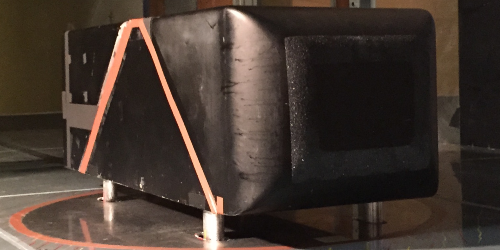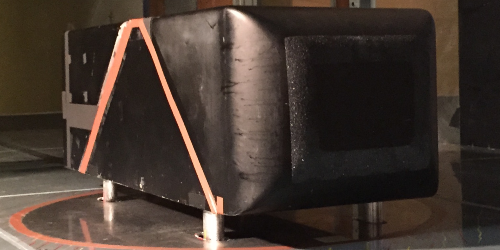Air Jets Reduce Car Drag
Car designers have many tricks for reducing drag. Curved surfaces, low profiles, and a cornucopia of aerodynamic doohickeys can all lower a car’s air resistance, but they aren’t always practical or desirable. Now, researchers have come up with a new tool—in the form of air jets—to battle vehicle drag. Their experiments show that repeatedly blasting air jets from the back of a car reduces drag without the need for obtrusive flaps and spoilers.
To test their idea, Ruiying Li of the École Nationale Supérieure de Mécanique et d'Aérotechnique (ENSMA), France, and colleagues built a model car, which was 89 cm long and had a boxy silhouette resembling a retro Volkswagon bus. They outfitted the car with a tank of compressed air that fed into nozzles encircling its posterior. They hooked the car up to a bevy of force and pressure sensors and then stuck the whole contraption in a wind tunnel. The car sat slightly askew, exposing its front and left side to a 90-km/h gale.
The team found that blasting air jets several hundred times per second out of the left-hand side of the car’s rear—the edge tilted toward the wind—reduced drag by about 6%. The air barrage acted like a foil, reshaping airflow within the car’s wake. Switching off the high-frequency blasts dozens of times each second optimized the wake’s shape, leading to a further 1% reduction in drag and a tripling in the amount of mechanical power gained by the car relative to the power consumed by the air jets.
The team says that activating additional nozzles on the top, right, and bottom edges of the car’s posterior should improve performance further, and their preliminary tests bear that out. Looking ahead, they envision incorporating some type of active feedback control into their system, which would be needed to keep drag reduction optimized under changing wind conditions.
This research is published in Physical Review Fluids.
–Christopher Crockett
Christopher Crockett is a freelance writer based in Arlington, Virginia.





